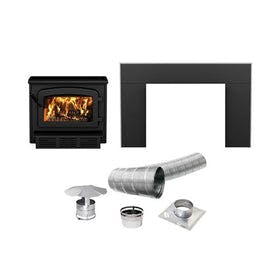
Tear Down or Renovate? A Look at the Numbers
Last Updated: Apr 11, 2025Imagine that after years of looking, you finally found a home for sale in the neighborhood you wanted to get into for decades. The problem is that the home is not exactly up to par. It needs major renovations to remain as a livable space for the long-term future. Should you invest the money and time in renovating the home, or does it make more sense (both economic and ecological) to tear down and build a new home?
Table of Contents
- Is It Better to Tear Down or Renovate?
- Embodied Energy in Every Home
- The Time Needed to Offset Construction Related Climate Change Impacts
- The Most Sustainable Option

Is It Better to Tear Down or Renovate?
The prevailing logic states that if the value of the home you purchased is 2-3 times less than the value of the surrounding homes in your neighborhood, it makes more sense to tear down and start over. For example, if your home costs $250,000, but all of your neighbors have houses that cost upwards of $750,000, your home probably needs some significant repairs. You would get better value through completely rebuilding a home. Besides, if the renovations your home needs add up to equal or more of a new home's cost, it might not make economic sense to renovate. This is often the case when a home has structural damage that will be extremely expensive to repair.
The ecological costs of tearing down and rebuilding a home are usually hidden, ignored, or not factored into the equation. For people who sincerely care about the environmental impact of the homes they live in, the decision on whether to tear down or renovate will also factor in some of the critical ecological considerations we explore below.

Thus, a standing home has a massive amount of embedded energy that makes it a livable shelter. As long as that home is standing and in use, that energy is going to good use. However, the moment that we tear down that home, we automatically throw that embodied energy away and have to start over.

The Time Needed to Offset Construction Related Climate Change Impacts
Construction teams and contractors have a vested interest in encouraging people to build new homes. For that reason, they often boast about the energetic savings that new construction techniques can offer. While sustainable building techniques have certainly improved in recent years, this does not negate the fact that there is a huge carbon footprint associated with new buildings.
For example, a new home is constructed and features high-performance insulation, increased energy efficiency, and improved indoor air quality. But, the carbon emitted by the construction of the house itself will still be too high. A report titled "The Greenest Building: Quantifying the Environmental Value of Building Reuse" gives us insight into the environmental toll new construction takes. The study found that, in many cases, replacing an older, less energy-efficient home with a new high-performance home will take an average of 80 years to offset the ecological impact of new construction. Global strategies to combat climate change focus on lowering our carbon emissions in the immediate future. We do not have 80 years left to wait for new home construction benefits to come around.

The Most Sustainable Option
Over one billion square feet of buildings are torn down and replaced each year in the United States alone. While there is growing interest in recycling and reusing building materials, most construction and demolition waste end in landfills. The EPA estimates that in 2017, waste related to construction and demolition added up to over 569 million tons.
Carl Elefante, who is the director of sustainable design at Quinn Evans Architects, believes that the "greenest building is the one already standing." Evidence from the study referenced above and from the sheer amount of construction and demolition waste generated proves that quote to be accurate. Luckily, there is an increased number of sustainable renovation techniques and professionals in the industry today. These skilled tradespeople can convert energy-inefficient homes with low air quality into efficient, healthy dwellings that will last for a lifetime.
Tobias Roberts
Tobias runs an agroecology farm and a natural building collective in the mountains of El Salvador. He specializes in earthen construction methods and uses permaculture design methods to integrate structures into the sustainability of the landscape.












